V.TEC.1728 - Microwave Detection of Contaminants in Trim
Ultra-wideband microwave technology can now be used to detect plastic contamination in red meat products on belts at line speed.
| Project start date: | 22 June 2023 |
| Project end date: | 15 May 2025 |
| Publication date: | 23 September 2025 |
| Project status: | Completed |
| Livestock species: | Grain-fed Cattle, Grass-fed Cattle, Sheep, Goat, Lamb |
| Relevant regions: | Southern Australia, Northern Australia, National, NSW, Western Australia, Victoria, Cold wet, South Australia, Dry, Queensland, Mediterranean, Tropical warm season wet, Northern Territory, Sub-tropical moist, Tasmania, Sub-tropical sub-humid, Eastern Australia, Temperate, Temperate sub-humid, Tropical Moist, International, Tropical wet |
|
Download Report
|
|
Summary
This project aims to develop a prototype online monitoring system for analysing meat composition and detecting plastic contaminants in red meat processing facilities using microwave scanning technology. The initiative will evaluate the feasibility of detecting plastics in trim and minced products, paving the way for the future adoption of the microwave prototype device in primary and secondary beef and lamb processing.
The project will be conducted in two experimental phases:
Phase 1: Focuses on designing and developing the hardware, software and online data processing systems.
Phase 2: Involves deploying the conceptual design in a laboratory setting to calibrate the meat scanning and plastic detection system.
Objectives
The overall aim of the project is to evaluate an early pre-production prototype using microwave technology to develop a prototype online monitoring system of red meat composition and plastic physical contaminants detection using microwave scanning technology.
The specific objectives include:
• Design and build the microwave scanning system and associated software. This system will be a modification of that described in ‘V.TEC.1710 Using microwave to detect foreign objects in meat’ to approximate a structure that would adapt to the physical constraints of the Coles RROA automated meat processing plant.
• Across a series of three experimental iterations, test the success of the system to identify plastic contaminants.
• Across a series of three experimental iterations, test the success of the system to determine chemical lean percentage of the product scanned.
The expected outcome will be to demonstrate the capacity to detect plastics of varying shapes and sizes within meat mixtures in a laboratory rig designed to operate across the top of a conveyor using pre-production prototype microwave technology.
Key findings
Key findings and achievements:
• The microwave prototype successfully detected whole and embedded plastic contaminants within meat samples, demonstrating its capability to identify foreign objects that traditional vision and X-ray systems cannot detect.
• The system also accurately predicted chemical lean percentage of ground mince, providing additional value for quality control in meat processing.
• Limitations were identified in detecting finely minced plastic (below 15mm) due to reduced permittivity contrast and dispersion within the meat matrix. Detection was more effective when plastic components were larger, but performance decreased as plastic was finely minced and distributed throughout the sample.
• The system was tested at different conveyor speeds (0–6m/min) and demonstrated strong performance, though further optimisation is needed for high-speed commercial processing lines (>10m/min).
• The Python-based automation system enables real-time data acquisition, processing and contamination detection, reducing the need for manual inspection.
Benefits to industry
The developed microwave detection system offers a food-safe, non-ionising, and automated alternative to current detection methods. By addressing key industry challenges such as plastic contamination in mince production, the system has the potential to reduce costly product recalls, improve quality control and enhance food safety compliance. The technology is scalable for industrial applications and could complement existing vision and X-ray systems to provide enhanced detection capabilities.
MLA action
Connecting device developers to industry partners to progress commercial adoption.
Future research
Further investment is recommended to facilitate the adoption of the technology in its first commercial environment.
More information
| Project manager: | Jack Cook |
| Contact email: | Reports@mla.com.au |
| Primary researcher: | MURDOCH UNIVERSITY |


